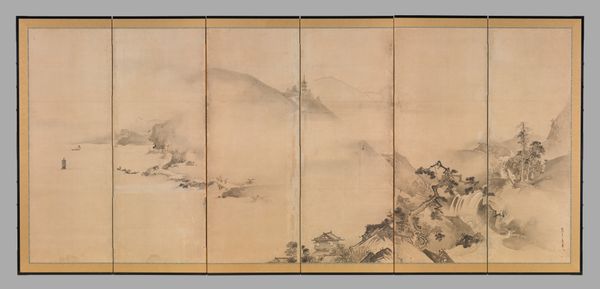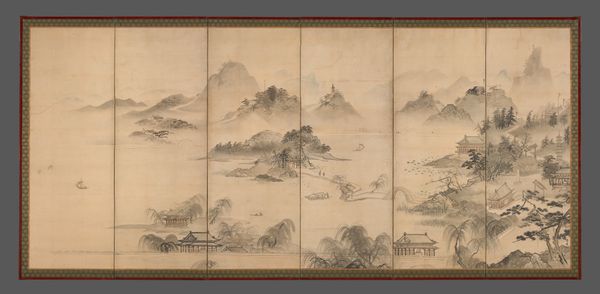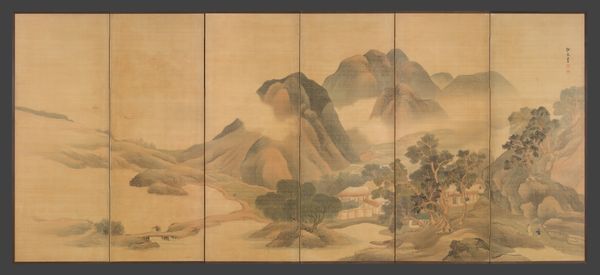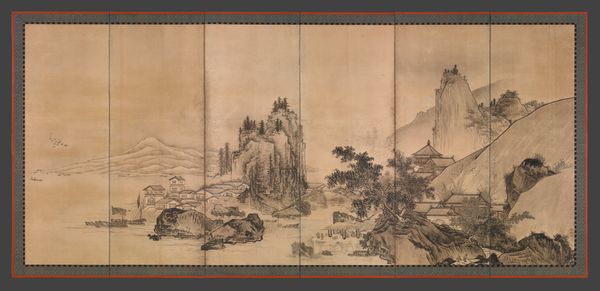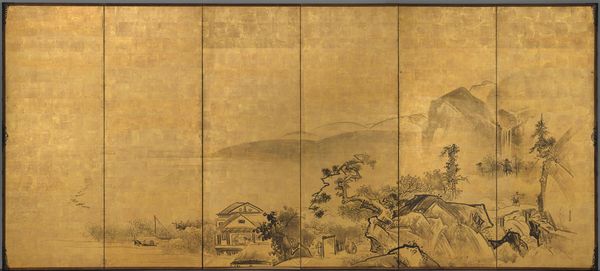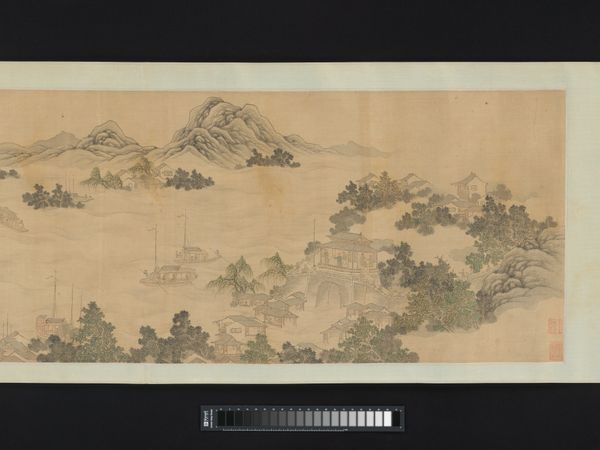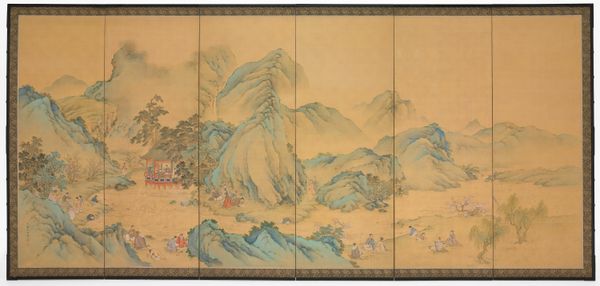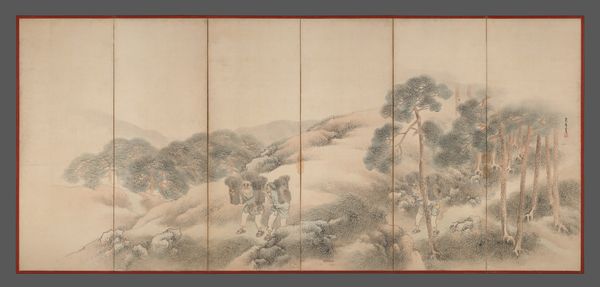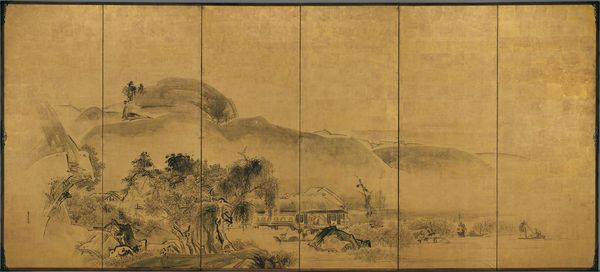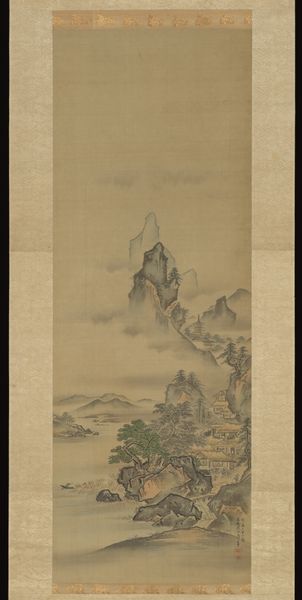
Dimensions: Image (each screen): 5 ft. 2 3/16 in. x 11 ft. 8 15/16 in. (1.58 x 3.58 m)
Copyright: Public Domain
Mori Shūhō painted this six-panel screen, “Landscape with Pavilion,” using ink, color, and gold leaf on paper in 1738. It invites us to reflect on the social and cultural values embedded in the natural world. During the Edo period, when Shūhō was working, landscape painting served not just as a depiction of nature but as a projection of social ideals. Confucianism, with its emphasis on harmony and order, profoundly influenced Japanese art. The landscapes often symbolized an ordered society, where each element had its place and contributed to the overall balance. Here, the gold leaf background evokes a sense of timelessness, while the meticulous brushstrokes capture the ruggedness and serenity of the mountains. The pavilion suggests human presence and intervention, yet it is dwarfed by the grandeur of the landscape. This contrast invites reflection on humanity's role in relation to nature. The painting doesn't merely represent a scene; it encapsulates a philosophy, a way of life that seeks harmony between the individual, society, and the natural world.
Comments
No comments
Be the first to comment and join the conversation on the ultimate creative platform.
